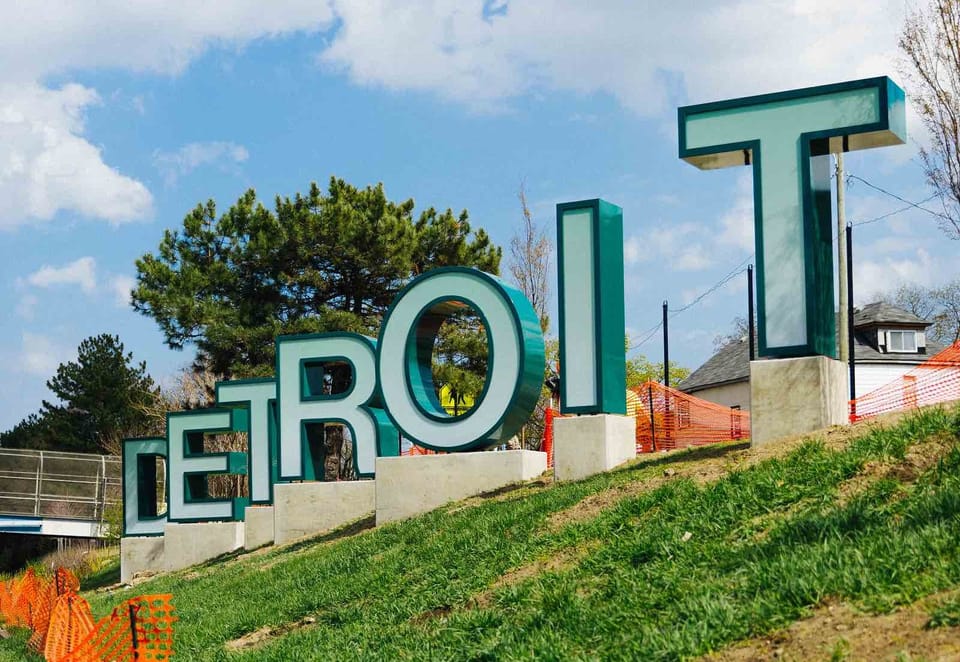Names that might make out-of-towners do a double take are part of Detroiters’ everyday vocabulary. We’re used to the neighborhoods, streets, and cities that makes up Metro Detroit. However, we don’t often stop to think about how these places got their names and who the people (and sometimes places) are behind them.
1. Hamtramck

Like much of Detroit’s history, Hamtramck can trace its name back to the French. It was named after Colonel Jean Francois Hamtramck, a Quebec native who joined the U.S. Army in 1775. Hamtramck fought alongside George Washington during the American Revolution. In 1796, after an illustrious military career, he was transferred to For Lernoult (later named Fort Shelby, then Fort Wayne) on July 11, 1796.
2. Corktown
Corktown is the oldest surviving neighborhood in Detroit, preserving much of the history of its immigrants. The neighborhood derives its name from the Irish immigrants who settled there. Many of them were from County Cork, Ireland. By the 1850s, half of the population of the 8th Ward (which contained Corktown) were of Irish descent.
3. Belle Isle

It’s funny how names tend to change over time. Belle Isle has gone through at least eight recorded names, though the last two names have stuck, at least for now. The island was given names by the Native Americans, the French, and the Americans.
Belle Isle received the first of its most recent names on July 4, 1845. Detroiters gathered for a picnic party on the island to celebrate the island’s new name: Belle Isle. The name was chosen to honor Miss Isabelle Cass, daughter of then Governor Lewis Cass.
However, that wasn’t the end of it. On August 29, 1881, the Detroit Common Council officially changed the name to Belle Isle Park.
4. Gratiot Avenue

Gratiot Avenue pays tribute to Brevet Brigadier General Charles Gratiot, who led an impressive military and engineering career. Gratiot was one of four young Missouri men to have been personally appointed by President Thomas Jefferson for entrance into the United States Military Academy in 1804.
He was commissioned in the Corps of Engineers and left his mark on several forts around the country, including Fort Meigs and Fort Joseph (later renamed Fort Gratiot). Gratiot was also part of the attack of the Battle of Mackinac Island. Afterward, he served as Chief Engineer in the Michigan Territory from 1817-1818.
5. Dearborn

In 1827, Governor Lewis Cass divided Wayne County into nine townships. One of those townships, originally named Bucklin, was destined to go through a few name changes. Governor Cass decided to rename part of Bucklin. He chose Dearborn Township after Major General Henry Dearborn, one of Governor Cass’s close friends.
Henry Dearborn had seen plenty of battle action. He fought in the American Revolution at Bunker Hill, among others, and he served on George Washington’s staff at Yorktown. Dearborn served as a congressman, representing Maine (1793-97). He also served as secretary of war under President Thomas Jefferson. Dearborn’s final office as a public servant was U.S. minister to Portugal from 1822-24.
6. Walter P. Reuther Freeway

It’s no secret that Interstate 696, also known as the Walter P. Reuther Freeway, was named after a person, but just who was this guy? Walter P. Reuther moved to Detroit from Wheeling, West Virginia, looking for work in the auto industry. He became active in labor union politics in the 1930s, and in 1936, he became president of the United Automobile Workers Local 174.
Just a decade later, he became president of the UAW, a position he held until 1970. During his time as UAW president, Reuther fought for union workers and managed to deliver higher wages, employer-funded pensions, and medical insurance. He was also a strong supporter of the Civil Rights Movement.
7. Livonia

Because of its rich soil and abundant harvests, Livonia attracted farming settlers from New England and New York. It’s thought that the settlers brought more than their culture with them. They brought the name Livonia, perhaps to help them feel more at home. Livonia is the name of a town in New York and Pennsylvania. It’s also a region of the Baltic Sea that makes up Estonia and Latvia. Some early Livonians could trace their roots back to this region.
8. Novi
Historians agree that Novi was originally known as West Farmington until 1830. That year, the town changed its name to Novi. Unfortunately, that’s where the agreement ends. There’s no documented proof of how the name Novi came about, although colorful stories abound.
Two of the more popular ones are that the city was the sixth township (No. VI) in the southwest part of Oakland County. The townspeople just decided to spell out the stop as one word, giving us Novi.
The other story applies the same logic to the route of the Grand River Road. The town was named after Toll Gate No. VI on Grand River. However, the toll road wasn’t built until 22 years after the town was named Novi.
It appears that the origin of the name Novi is going to be one of life’s unsolved mysteries, at least for now.
9. John C. Lodge Freeway

M-10, also known as the John C. Lodge Freeway was, not surprisingly, named after John Christian Lodge. Lodge attended the Michigan Military Academy in 1881, and he worked as a reporter and city editor for the Detroit Free Press from 1889 to 1896.
His foray into politics came in 1897 when he served as chief clerk for the Wayne County Auditors until 1905. Lodge became a Detroit City Council member in 1910 and remained one for 17 years. He served as mayor from 1922-23 upon the resignation of James J. Couzens and from Aug. 1924-Nov. 1924 after Joseph A. Martin’s resignation.
Lodge was finally elected mayor in 1927 and served until 1929. After his defeat in 1929, Lodge returned to the Detroit City Council, serving from 1932 to 1947.
10. Beaubien Street

The French influence is evident in this street name that out-of-towners butcher on a regular basis. Beaubien Street was named after the Beaubien family, a large family of landowners in early Detroit. Interestingly, the family name was originally Cuillerier, but it was changed to Beaubien (denoting the female lineage) after 1670. From then on, the family was known as Beaubien.
In 1745, Antoine Beaubien acquired a farm from the French Government at the present-day location of Beaubien and St. Antoine streets. When he died in 1793, he left his farm to his children.





















